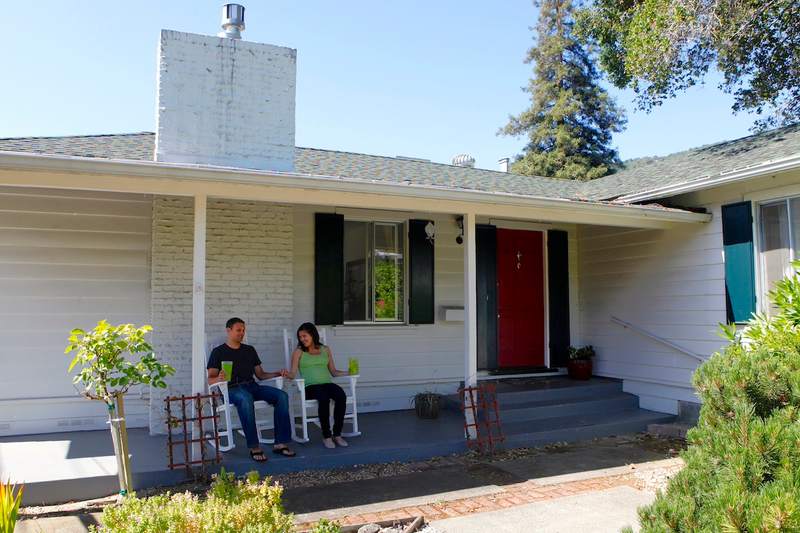What is a jumbo loan refinance?
First, to answer this question, it’s important to understand the definition of a jumbo loan. This type of mortgage exceeds the conforming loan limits set by the Federal Housing Finance Agency (FHFA) that are used by Fannie Mae and Freddie Mac.
For 2023, the conforming loan limit is $715,000 for a single-unit house in most of the U.S. In more expensive areas of the U.S., such as Alaska and Hawaii, the conforming loan limit is $970,800. This simply means that if you obtain a mortgage that goes over these amounts, you must access a non-conforming loan – a jumbo loan, mainly used for luxury homes or properties in competitive markets.
In this article, we’ll walk you through the definition of a jumbo loan refinance, requirements for a jumbo loan and how to refinance a jumbo loan. Keep in mind that you’ll have to meet stricter requirements to refinance this type of home loan.
What Is A Jumbo Loan Refinance?
What is a jumbo refinance, anyway?
A jumbo loan refinance means that you replace one loan with another. There are many reasons why you may want to consider a jumbo loan refinance, and most benefits are usually obvious after crunching the numbers. For example, you may want to get a lower interest rate, shorten or lengthen your loan term or change your interest structure.
- Lower interest rate: Your interest rate is the amount you pay to borrow, and it’s figured as a percentage of your principal. When mortgage rates trend lower and you refinance to take advantage of these lower interest rates, it can help you save money over the life of your loan.
- Lengthen loan term: If you’re having trouble making your monthly mortgage payments, lengthening your loan term can help make the payments smaller. For example, you may choose to stretch them from a 15-year mortgage to a 30-year mortgage. However, it’s extending your loan term means you will pay more in interest over the life of your loan.
- Shorten loan term: Shortening your loan term is the reverse of lengthening your loan term. It can offer a huge benefit – you can own your home sooner and pay less in interest over time. However, you’ll have a higher monthly payment over the life of your loan.
- Adjust interest structure: You may also want to change your interest structure. For example, you may want to switch from an adjusted-rate mortgage (ARM) (in which your payment changes based on market conditions) to a fixed-rate mortgage (one that keeps your interest rate and payment the same each month). The ARM gives you a lower introductory rate, but the a fixed rate can give you more predictability in your payment.
- Tap into home equity: Home equity refers to the amount of your home you own versus the amount you owe on your mortgage. A jumbo cash-out refinance can help you benefit from the equity that you’ve built up. In this case, you borrow more than your initial principal. For example, let’s say you have a $700,000 mortgage balance and need $50,000 to do home repairs. In a cash-out refinance, you accept a new loan worth $750,000 and after closing, you receive $50,000 in cash. If your lender offers jumbo loan refinancing (some lenders don’t) most lenders want to see you leave at least 20% – 30% equity in your home.
See What You Qualify For
Buy A Home
Discover mortgage options that fit your unique financial needs.

Refinance
Refinance your mortgage to have more money for what matters.
Tap Into Equity
Use your home’s equity and unlock cash to achieve your goals.
Refinance Jumbo Loan Requirements
Lenders that offer jumbo mortgage refinances have stricter requirements compared to conventional, FHA or VA loans.
Thoroughly consider the following requirements before applying for a jumbo loan refinance.
Credit Score
Your credit score is a three-digit number that shows how successfully you handle debt, both currently and in the past. For 30-year fixed-rate loans, the average median credit score accepted by most lenders that offer refinance for jumbo loans is a 680. For 15-year fixed loans and ARMs, you’ll need a credit score of 700 or higher. You may need a 760 credit score if you’re not refinancing a primary residence or single-family home for investment properties or rental properties.
Debt-To-Income Ratio
Your debt-to-income (DTI) ratio tells your bank or credit union how much of your monthly income you use to pay recurring bills, such as your mortgage payment, minimum payments on credit cards, student loans, personal loans and auto loans. They use this as a yardstick to assess your risk as a borrower. You present more risk to a lender if you have a high DTI. In most cases, you must have a DTI of no more than 36%.
Payment History
You will also need to have a clean payment history, without late or missing mortgage payments or recent bankruptcies in order to secure a jumbo refinance loan.
Home Equity
Lenders will require you to have a certain amount of home equity before they will consider a jumbo refinance. Some types of jumbo refinancing, such as cash-out refinances, might require more equity than others. Your jumbo refinance depends on your current home value. Most lenders require you to have a certain loan-to-value ratio (LTV) that measures the appraised value of a home against the amount you want to borrow.
The appraised value of a home is the home’s market value. Since most lenders require you to leave 20% – 30% of your equity in your home once you refinance your jumbo loan, you may not qualify for a cash-out refinance if you’re still in the early years of your loan term.
Liquid Reserves
Borrowers with a jumbo loan will need cash reserves. Cash reserves refer to excess money that you have in the bank and in investments. Your lender needs to know that in cases of financial hardship, you will be able to make your monthly payments. Cash reserve amounts vary by lender.
How To Refinance A Jumbo Loan
Jumbo loan refinance requirements will vary but most lenders and borrowers can rely on the following steps for the refinance closing process:
- Choose a lender. You can stick with your original lender or find a new one. Compare rates and terms before choosing the right lender for your needs.
- Collect important documents. Some important documentation you will need to provide to your mortgage lender includes tax returns, bank statements and proof of income such as pay stubs.
- Get a home appraisal. Your lender will initiate the appraisal for you. They will have a professional appraiser note the basic condition of the home, any upgrades you’ve made and comparable homes in the area. The refinance appraisal is important because they give you an update on how much your home is now worth. It is also important because it can affect how much home equity you can borrow against.
- Complete the underwriting. Underwriting means that your lender takes a look at your income, assets, debt and property details to approve your loan. Underwriting ultimately helps a lender understand the types of risk they take on if they decide to extend a refi to you. The process is usually done manually and can take more time than when you got your original loan. Note that underwriters will take a look at your credit, so if your credit report shows red flags (such as making several large purchases on your credit card, the underwriter will take note of it and it could hurt your chances of getting the refinance). It’s best to wait until after you get your refinance to make purchases.
- Schedule a closing date. Once you receive final lender approval, you can progress to closing. Prepare to pay your closing costs at this time. Closing costs refer to the fees and expenses your lender charges in order to replace your current mortgage with a new one. You can expect to pay around 2% – 6% of your total loan amount in closing costs.
- Finalize the new mortgage. Once you’ve gone through closing, you’ll have a new mortgage with a new monthly payment amount, interest rate and loan term.
Jumbo Refinance Loan FAQs
Learn more about refinancing a jumbo loan by checking out the answers to the following questions.
When should I consider refinancing my jumbo mortgage loan?
No rule exists that says how long you have to wait in order to refinance your jumbo mortgage. However, because mortgage lenders have stricter requirements, you may need to wait to meet those before you apply (such as credit score, DTI requirements and cash reserve requirements). You can consider refinancing your jumbo mortgage loan at any time as long as you would retain 20% – 30% equity in your home.
Why should I refinance my jumbo loan?
If you think you can save money on your loan by refinancing or want to free up additional cash flow, it’s worthwhile to consider refinancing your jumbo mortgage loan. If you’re financially healthy, want to get a lower interest rate, prefer to change your loan type (from an ARM to a fixed-rate mortgage, for example), are okay with paying closing costs and are fine with longer processing times, refinancing a jumbo mortgage loan might be right for you.
Are there jumbo loan refinancing alternatives?
Yes, there are jumbo loan refinancing alternatives. You can lower your monthly mortgage payment without a refinance. You can make extra payments on your loan so you owe less over time, comparison shop for homeowners insurance for a new insurer that costs less and check into your property tax assessment with your local assessor. You might discover that you’re paying too much for your property taxes.
The Bottom Line: Refinancing A Jumbo Loan Can Give You More Options
In order to refinance jumbo loans, homeowners must meet more stringent requirements. However, you can save money over time through a lower monthly payment or by gaining more flexibility in your budget. Shopping among several lenders can help you discover the right refinance option for you.
Find out if a Jumbo loan is right for you.
See rates, requirements and beneifts.

Melissa Brock
Melissa Brock is a freelance writer and editor who writes about higher education, trading, investing, personal finance, cryptocurrency, mortgages and insurance. Melissa also writes SEO-driven blog copy for independent educational consultants and runs her website, College Money Tips, to help families navigate the college journey. She spent 12 years in the admission office at her alma mater.












